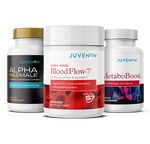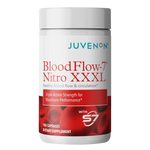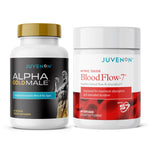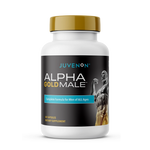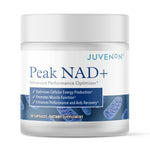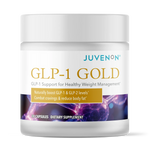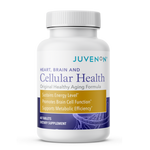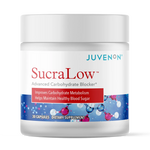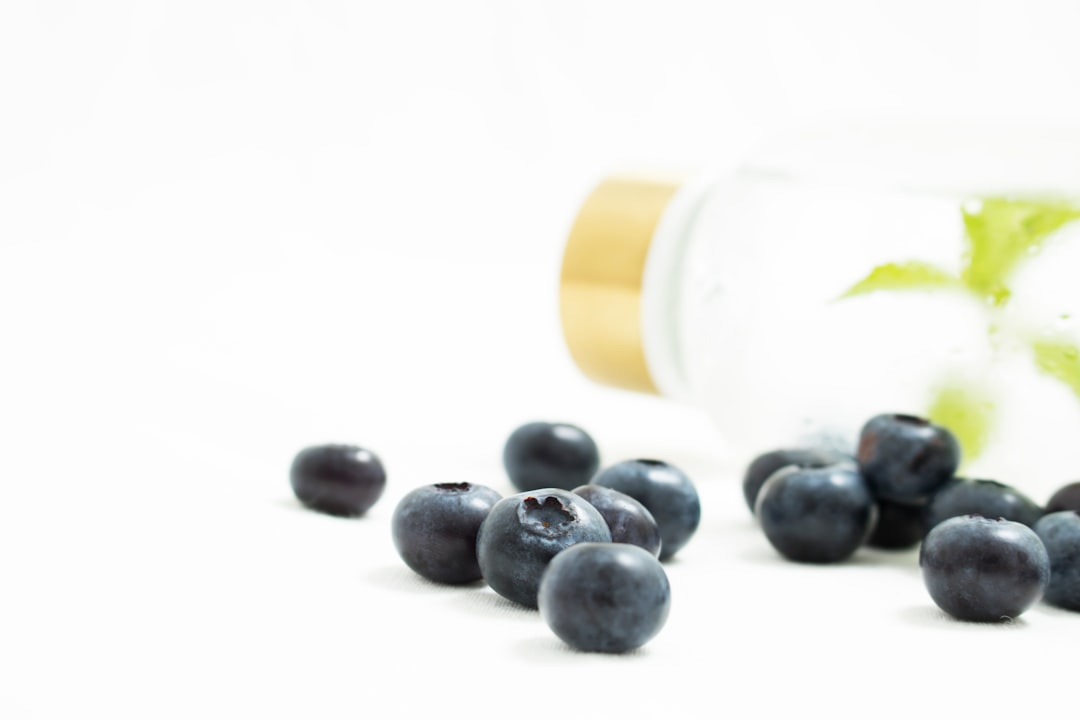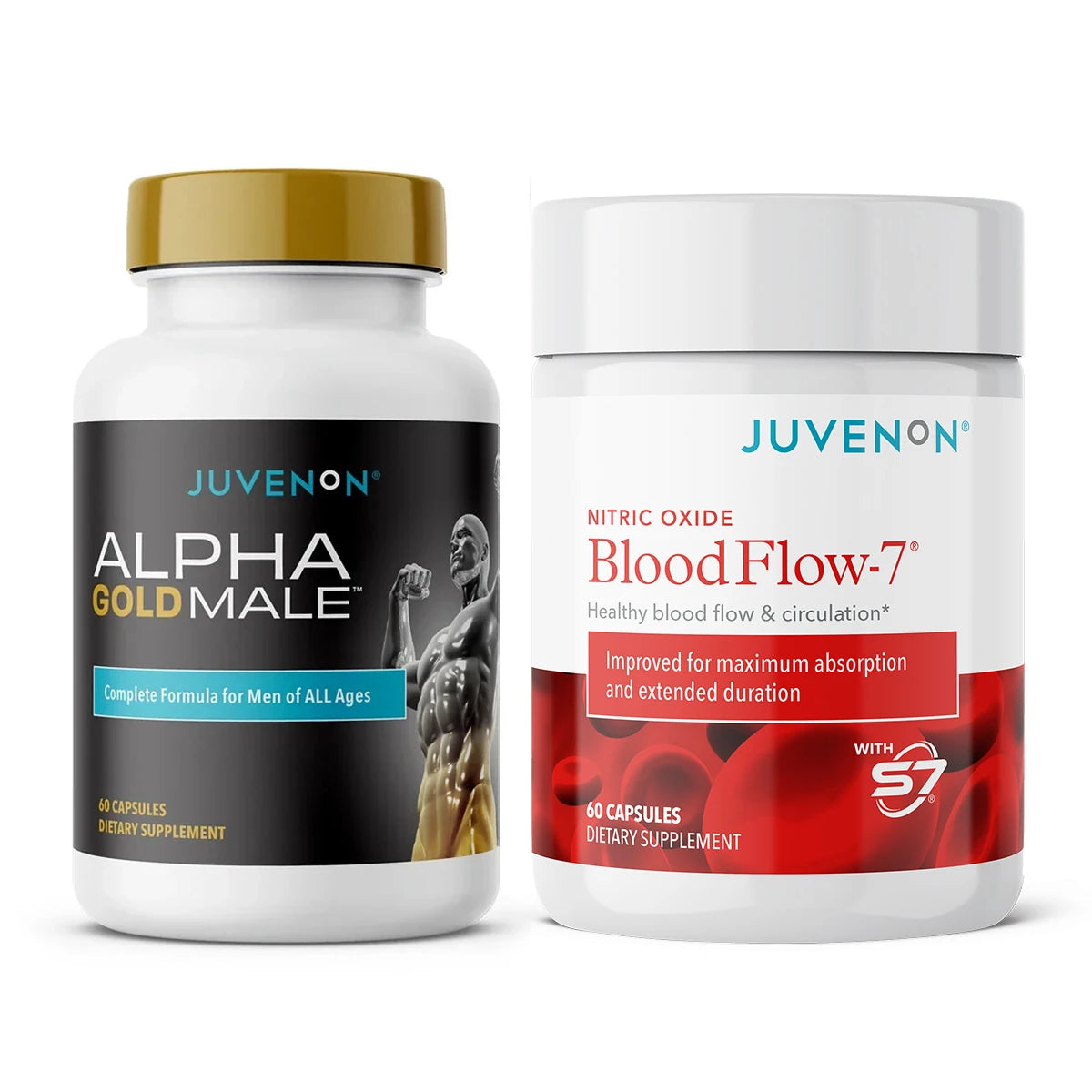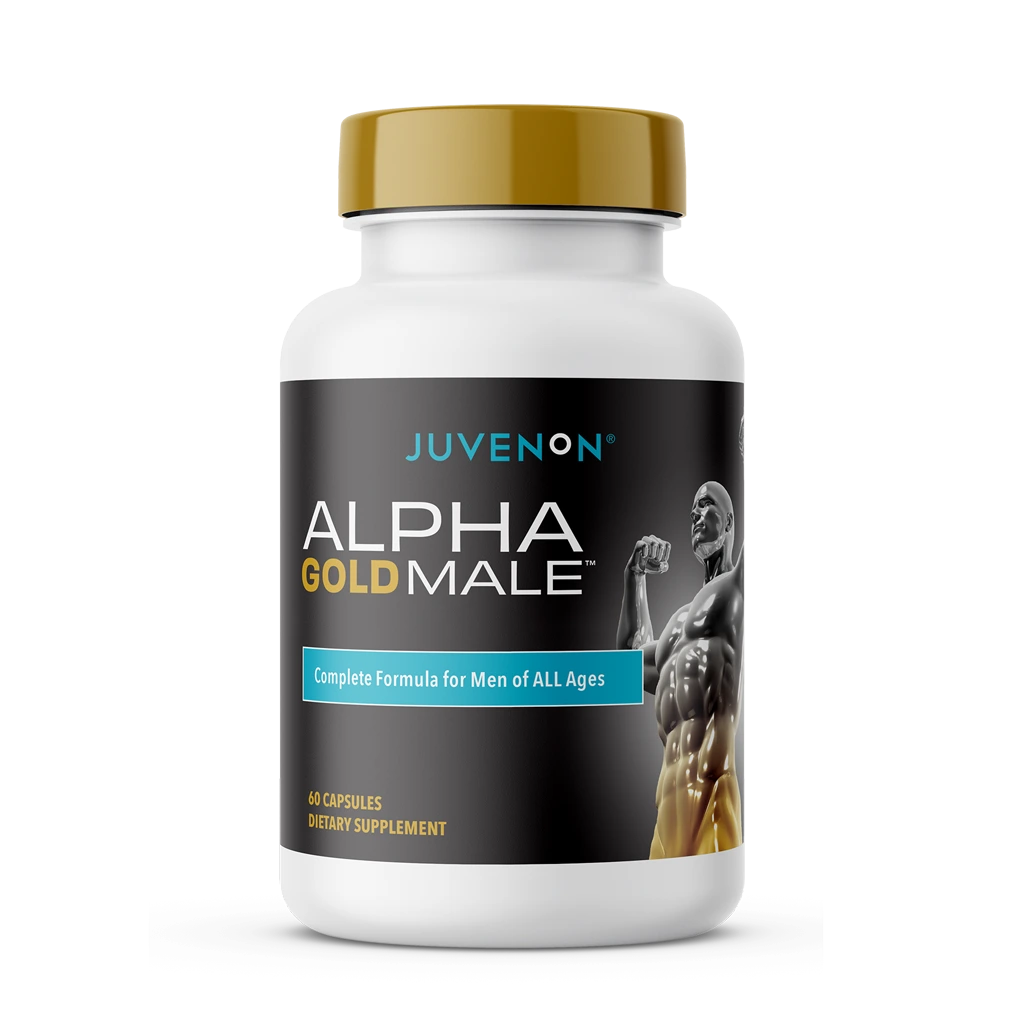
Metabolism support for aging adults becomes crucial as our bodies naturally slow down the rate at which we burn calories and maintain muscle mass. As we get older, our bodies experience significant changes—among these, a gradual slowdown in metabolism is one that some may find challenging.
Key metabolism support strategies for aging adults:
- Exercise: Resistance training 2-3x weekly + 150 minutes moderate aerobic activity
- Nutrition: 1.0-1.5g protein per kg body weight daily, stay hydrated
- Sleep: 7-9 hours consistent sleep schedule
- Stress management: Meditation, tai chi, or relaxation techniques
- Professional monitoring: Regular checkups for thyroid and hormone levels
The science is clear: adults begin losing muscle mass in their 30s—about 3% to 8% each decade, with the rate accelerating to as much as 15% per decade after age 50. This muscle loss directly impacts your resting energy expenditure, which decreases by approximately 4 calories per year with age.
But here's the good news: you're not doomed to accept a sluggish metabolism. Research shows that the right combination of resistance training, proper nutrition, adequate sleep, and stress management can significantly offset age-related metabolic decline.
The real culprit isn't just aging itself—it's the compound effect of becoming less active, losing muscle mass, and experiencing hormonal shifts. Understanding these factors gives you the power to take targeted action.
I'm Michelle M. Henson, and as Head of Copywriting for healthy aging supplement company Juvenon, I've spent years researching and writing about metabolism support for aging adults and the science behind healthy longevity. I'll guide you through evidence-based strategies that can help keep your metabolic fire burning strong as you age.

Understanding Metabolism After 60
Your metabolism is like your body's personal engine room—it's the collection of all chemical reactions that keep your body alive and functioning, from breathing to thinking to moving around.
After age 60, several key changes start happening that affect your metabolic rate. Your resting energy expenditure drops by about 4 calories per year. Your precious muscle mass starts decreasing more rapidly. The hormonal production of key metabolic regulators begins to decline, while visceral fat likes to accumulate around your organs.
Here's something encouraging though: research involving 6,421 participants from 29 countries revealed that metabolism actually stays pretty steady through most of adulthood. The significant decline doesn't really kick in until after age 60. This means that "middle-age spread" many people worry about isn't necessarily due to a slower metabolism—it's more likely due to lifestyle factors like moving less and losing muscle.
What Is Metabolism and Why Does It Change With Age?
Your basal metabolism is like your body's minimum energy bill—it's what you need just to keep the lights on. It accounts for about 50-70% of all the calories you burn in a day.
As we age, several things start working against us. Our mitochondrial function begins to decline—these are the tiny powerhouses inside our cells that produce energy. They become about 20% less numerous and 50% less efficient in older adults.
Oxidative stress also plays a role. Think of it like rust building up in your car's engine over time. Years of cellular damage from free radicals can make your metabolic processes less efficient.
Key Factors Driving Metabolic Decline
The biggest troublemaker when it comes to metabolism support for aging adults is muscle mass loss, also called sarcopenia. Muscles use more calories than fat tissue, even when you're just sitting around. After age 60, skeletal muscle mass declines by 0.7-0.8% per year, while strength declines even faster at 2.5-4% annually.
Hormone decline is another major player. Your body starts producing less of the key metabolic hormones like testosterone, estrogen, growth hormone, and thyroid hormones.
Body-fat redistribution becomes more noticeable too. Adults typically gain about 0.3-0.5 kg of body weight per year between ages 40-66, with body fat increasing by roughly 1% per year from the fourth decade of life.
Body Composition & Hormones 101
Testosterone is crucial for maintaining muscle mass and metabolic rate in both men and women. Estrogen is particularly important for women, helping regulate where fat gets stored and how well your body responds to insulin. The dramatic drop during menopause can really shake things up metabolically.
Thyroid hormones are like your body's metabolic thermostat—they directly control how fast your engine runs. Cortisol, your stress hormone, can be problematic when it stays liftd. Chronic stress keeps cortisol high, which promotes fat storage and can slow your metabolic rate.
Exercise Strategies to Rev Up Metabolism
Here's something that might surprise you: exercise isn't just about burning calories while you're doing it. For metabolism support for aging adults, the right exercise actually transforms your body into a more efficient calorie-burning machine around the clock.
Research involving 65 individuals comparing younger adults (21-35 years) to older adults (50-72 years) revealed something remarkable: endurance exercise completely prevented age-related metabolic slowdown. The older adults who exercised regularly had metabolic rates similar to people decades younger.

Resistance Training: The Muscle Multiplier
If I could recommend just one type of exercise for metabolic support, it would be resistance training. Every pound of muscle you maintain burns about 6-7 calories per day at rest, compared to just 2-3 calories for fat tissue.
Free weights offer the most bang for your buck because they engage multiple muscle groups and improve balance. Resistance machines provide excellent stability and controlled movements. Resistance bands are perfect for home workouts—they're portable, joint-friendly, and provide variable resistance. Body-weight exercises like modified push-ups and chair squats can be surprisingly effective.
The magic happens through progressive overload—gradually challenging your muscles a little more each week. Start with 2-3 sessions per week, focusing on major muscle groups. Give yourself 48 hours recovery between sessions targeting the same muscles.
Aerobic & Low-Impact Cardio (Swimming, Cycling, Dancing)
While resistance training builds your metabolic engine, aerobic exercise keeps it running smoothly. Cardiovascular exercise improves your body's ability to deliver oxygen and nutrients to working muscles while enhancing insulin sensitivity.
Swimming and water aerobics are excellent for older adults. The water supports about 90% of your body weight, making it incredibly gentle on joints while still providing excellent resistance.
Cycling, whether on a stationary bike or outdoors, provides excellent cardiovascular benefits while strengthening leg muscles. Dancing combines aerobic exercise with balance training, coordination, and pure fun.
Regular aerobic exercise improves your VO₂ max—essentially your body's ability to use oxygen efficiently. This translates to better energy levels throughout the day.
Combining Modalities for Maximum Metabolism Support for Aging Adults
The real magic happens when you combine different types of exercise throughout the week. Monday might start with resistance training focusing on your upper body, followed by a 20-minute walk. Tuesday could be swimming for 30-45 minutes. Wednesday brings lower body strength training.
This approach ensures you're challenging different energy systems while allowing adequate recovery. Recovery isn't optional—it's when your body actually builds stronger muscles and improves metabolic function.
Nutrition & Hydration Hacks for a Faster Aging Metabolism
Your fork might just be your most powerful tool for metabolism support for aging adults. The foods you choose and how you fuel your body can make a remarkable difference in keeping your metabolic fire burning bright.
The golden rules are surprisingly simple: aim for 1.0-1.5 grams of protein per kilogram of body weight daily, stay consistently hydrated, and choose nutrient-dense foods that work with your metabolism, not against it.
One fascinating finding? Simply drinking water can boost your metabolism by up to 30% for about an hour. Your body burns calories heating that water to body temperature.
Protein & Muscle Synthesis Essentials
Your muscles become pickier about protein as you age. Scientists call it "anabolic resistance"—your muscles need higher quality and quantity to do their job.
Protein becomes your metabolic best friend after 60. It burns more calories during digestion than carbs or fats, helps preserve muscle mass, and keeps you feeling satisfied longer.
The protein powerhouses include lean meats, fish, eggs, dairy, beans, and nuts. Don't save all your protein for dinner—spread 20-30 grams of high-quality protein across each meal throughout the day.
Pay special attention to leucine, an amino acid found abundantly in dairy products, meat, and eggs. Think of leucine as the key that open ups your muscle's ability to use protein effectively.
Metabolism-Friendly Foods & Supplements
Green tea leads the metabolism-friendly foods—its catechins can increase your resting metabolic rate by 4-5%. Your morning coffee habit helps too—caffeine can bump up your metabolic rate by 3-11%.
Omega-3 fatty acids from fatty fish, walnuts, and flaxseeds support muscle protein synthesis and help reduce inflammation. Ginger provides mild thermogenic effects, while cacao contains flavonoids that support metabolic function.
Vitamin D deserves special mention since nearly half of Americans are deficient. This vitamin plays crucial roles in muscle function and metabolic health.
Hydration, Fiber & Portion Control for Metabolism Support for Aging Adults
Water is probably the most underrated metabolic booster. When you drink water, your body burns calories through thermogenesis—warming that water to body temperature. This effect lasts about an hour and can boost metabolism by up to 30%.
Make hydration effortless by drinking a glass of water before each meal and keeping water visible as a constant reminder.
Fiber works behind the scenes to support your metabolic health. Soluble fiber feeds beneficial gut bacteria, and a healthy gut microbiome plays a significant role in metabolic function.
Portion control doesn't have to feel restrictive. Use smaller plates to naturally reduce portions without feeling deprived. Eat slowly and mindfully—it takes about 20 minutes for your brain to register fullness.
Lifestyle Habits That Protect Metabolic Health
Beyond exercise and nutrition, several lifestyle factors significantly impact metabolic health in aging adults. Your daily habits create a ripple effect throughout your body's metabolic systems.

Sleep, Stress & Hormones: The Hidden Metabolic Switches
Sleep is your metabolism's best friend—and unfortunately, many older adults aren't getting enough quality rest. When you don't sleep well, your body's metabolic machinery starts to malfunction.
Poor sleep wreaks havoc on your hunger hormones leptin and ghrelin, making you feel hungrier and less satisfied after meals. It also increases cortisol production, which signals your body to store fat. Perhaps most importantly, inadequate sleep impairs glucose metabolism and reduces growth hormone production.
The magic number for metabolism support for aging adults is 7-9 hours of consistent sleep per night. Creating better sleep starts with maintaining consistent sleep and wake times. Your bedroom should be cool, dark, and quiet. Avoid screens 1-2 hours before bedtime to help your brain produce melatonin naturally.
Chronic stress is metabolism's silent enemy. When you're constantly stressed, your body stays in "fight or flight" mode, keeping cortisol levels liftd. This not only slows your metabolic rate but also promotes the storage of visceral fat.
Stress reduction techniques can have measurable effects on your metabolic health. Meditation, even just 10-15 minutes daily, can reduce cortisol levels and improve insulin sensitivity. Deep breathing exercises activate your parasympathetic nervous system. Tai chi offers a perfect combination of gentle movement and stress reduction.
Daily Habits & Environmental Tweaks
Older adults burn 29% fewer calories through daily activities compared to younger adults. This dramatic reduction in non-exercise activity thermogenesis (NEAT) is often a bigger factor in metabolic decline than formal exercise habits.
The solution is moving more throughout your day. Take short walking breaks every 30-60 minutes. When possible, use stairs instead of elevators, park farther away from your destination, or get off public transport one stop early.
Even household activities contribute to your metabolic health when you do chores more vigorously. Standing while talking on the phone is another simple way to increase your daily energy expenditure.
Environmental factors play a subtle but important role. Sunlight exposure, particularly in the morning, helps regulate your circadian rhythms and supports vitamin D production. Perhaps most importantly, community support makes all these healthy habits easier to maintain.
Warning Signs & Professional Help
Your body has ways of telling you when something's not quite right with your metabolism. Unexplained weight gain despite eating the same foods and staying active can indicate metabolic slowdown beyond normal aging. Persistent fatigue that doesn't improve with rest might suggest thyroid issues or other hormonal imbalances.
Difficulty losing weight despite reasonable efforts often frustrates older adults, but it could point to insulin resistance or other metabolic disorders. Frequent blood sugar spikes or crashes may indicate developing diabetes or metabolic syndrome.
Some people notice they're feeling cold all the time, which can signal thyroid problems. Difficulty building or maintaining muscle mass despite resistance training might indicate hormonal imbalances.

When to Consult a Healthcare Professional
Your primary care physician should be your first stop for an overall health assessment. They can screen for common metabolic disorders like diabetes or thyroid disease.
An endocrinologist becomes important if you have concerns about hormone levels, thyroid function, or diabetes management. A registered dietitian can create personalized nutrition plans, especially valuable if you have specific health conditions affecting your metabolism.
Useful assessments include a DEXA scan that measures both bone density and body composition, and a comprehensive blood panel that should include thyroid function, vitamin D levels, glucose, and lipid profiles.
Medical & Pharmacological Interventions
Sometimes lifestyle changes need medical support to be fully effective. Hormone replacement therapy may be appropriate for some individuals, particularly women experiencing significant menopause-related metabolic changes.
Thyroid medications are essential for people with hypothyroidism, which can significantly slow metabolism. Insulin sensitizers may be prescribed for those with insulin resistance or type 2 diabetes.
The most important thing to remember is that any medical intervention should be part of a comprehensive approach. Medications work best when combined with the lifestyle strategies we've discussed—proper nutrition, regular exercise, adequate sleep, and stress management.
Frequently Asked Questions about Metabolism Support for Aging Adults
Does metabolism really "shut down" after 60?
Your metabolism doesn't suddenly shut down like a light switch. Instead, it's more like a dimmer switch that gradually gets turned down.
Research shows that metabolism support for aging adults becomes important because total energy expenditure and basal metabolic rate decline by about 0.7% per year after age 60. That's about 20-30 calories per day each year.
Much of what people blame on a "slow metabolism" is actually due to loss of muscle mass and reduced activity levels. Studies show physically active older adults can maintain metabolic rates similar to people decades younger.
How fast can muscle-building exercise improve metabolic rate?
Your body starts responding to resistance training almost immediately. Within 2-4 weeks, you'll notice initial strength gains. The real magic starts happening around 6-8 weeks when measurable increases in muscle mass begin.
By 12-16 weeks, you'll see significant improvements in both muscle mass and strength. After 6 months or more of consistent training, you'll experience substantial changes in body composition and resting metabolic rate. Some studies show increases of 100-200 calories per day in resting metabolic rate after consistent resistance training.
Consistency is key—the benefits begin to decline within 2-3 weeks of stopping.
Are commercial "metabolism boosters" safe for seniors?
Most commercial metabolism boosters are loaded with stimulants like caffeine, sometimes in very high doses. As we age, we often become more sensitive to stimulants, and many older adults take medications that can interact dangerously with high doses of caffeine.
Instead of reaching for these quick fixes, focus on evidence-based lifestyle modifications first. The strategies we've discussed—resistance training, proper protein intake, good sleep habits—these are your safest and most effective metabolism boosters.
If you're considering any supplements, always consult with your healthcare provider first. At Juvenon, we focus on scientifically-backed formulations that support healthy aging without relying on excessive stimulants.
Conclusion & Next Steps
Taking charge of metabolism support for aging adults feels overwhelming at first, but it's really about making friends with your body's changing needs. You're not fighting against time—you're working with it to stay strong, energetic, and healthy.
The science shows us that while some metabolic shifts are natural, the dramatic decline many people experience isn't inevitable.
Your metabolism revival starts today. Begin with resistance training twice a week—even light weights make a difference. Focus on getting enough protein at each meal, about the size of your palm. Stay hydrated throughout the day, and prioritize those 7-9 hours of sleep your body craves.
Stress management matters more than you might think. Whether it's a daily walk, meditation, or time with loved ones, find what helps you unwind.
Regular checkups with your healthcare team keep you on track. They can spot issues early and help you adjust your approach as needed.
At Juvenon, we understand the unique challenges of healthy aging. Our patented formulas are designed specifically to support your body's changing needs. With our 60-day money-back guarantee and subscriber discounts, you can try our scientifically-backed supplements risk-free as part of your comprehensive approach to metabolic health.
Here's the beautiful truth: small, consistent changes create remarkable results over time. Pick one strategy that feels doable, stick with it for a few weeks, then add another. Your future self will feel the difference.
Your metabolism doesn't have to be a victim of time. With patience, consistency, and the right support, you can keep your inner fire burning bright. Every healthy choice you make today is an investment in your energy, strength, and vitality tomorrow.
Ready to learn more about healthy aging? Find how Cardinal View Senior Living supports active, healthy lifestyles and see what's possible when you prioritize your metabolic health.

